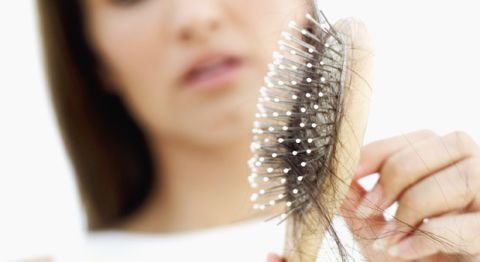Excessive Shedding
Most women shed some hair every day. But occasionally, we find that we’re shedding more hair than normal. If you think you’re experiencing an unusually large amount of hair shedding or your hair has become dull and lifeless, consider what factors could be affecting the health of your hair and make sure to call the hair restoration skinmd1 team to help your out get your confidence back.
Do You Have Hair Loss or Hair Shedding?
What is the difference between hair loss and hair shedding? How does hair loss differ from hair shedding, or are the two the same? As it turns out, there is a difference between hair loss and hair shedding. A minimal amount of hair shedding is actually quite common. Excessive shedding and hair loss are considered two distinct conditions. Excessive shedding is known as telogen effluvium, while hair loss is known as anagen effluvium. For more information about these two conditions, see this scientific study on nutritional factors and hair loss and the American Hair Loss Association’s information on effluviums.
What Is Normal Shedding?
Hair Shedding or Thin Hair
You may be asking how many hairs is normal to shed per day. The body sheds around 100 hairs per day as a part of normal daily hair loss, with no visible effects on hair thickness. But if you regularly lose more hair than this in your hairbrush or the shower drain, you might be asking yourself, why is my hair shedding? If your hair is shedding more than usual, you could be suffering from excessive hair shedding. Hair shedding is typically a temporary condition associated with a particularly stressful life event, or it can be caused by hormonal changes, over-styling or nutritional deficiencies.

In contrast, hair loss, or anagen effluvium, happens when something stops hair from growing. Hair will not regrow until the cause of the condition is addressed. The most common causes of hair loss include hereditary hair loss, immune system overreaction, and certain drugs and treatments. Patients who undergo chemotherapy or other radiation treatments, for example, tend to lose a lot of hair. Their hair, however, usually regrows once the treatment has stopped.
In contrast, women who inherit the genes for hereditary hair loss may need medical treatment to regrow their hair. For women, hereditary hair loss typically manifests itself in the form of gradual thinning. Finally, tight hairstyles or braids that pull on the hair, or damaging products and hair color, can cause temporary hair loss.
Causes of Excessive Hair Shedding
What is extreme hair shedding and what causes hair shedding? It’s normal to shed around 100 or so hairs a day. These are the hairs you find in your shower, on your carpet and on the shoulder of your jacket. Most of the time, you won’t even realize that you are shedding these hairs.

If your body has increased hair shedding on a daily basis, however, you may have excessive hair shedding. There are many hair shedding causes, but a little-known fact is that curly hair is more likely to shed than thin hair. This is often because those with curly hair use more styling products and hot tools to manage their hair.
How to Stop Excessive Shedding
Known as telogen effluvium, excessive hair shedding is a temporary condition and typically affects those exposed to one or more physical or emotional stressors; however sometimes it can get out of control, in these situations it’s important to use a shea moisture shampoo and conditioner to fight the shedding . Examples include people who are experiencing a difficult or traumatic life event, those who have lost 20 pounds or more, women who have recently given birth, women who have undergone an operation or are recovering from an illness, or women who have switched or stopped birth control pills. Often, the excessive shedding will not become apparent until a few months after the stressful event due to the hair growth cycle.
